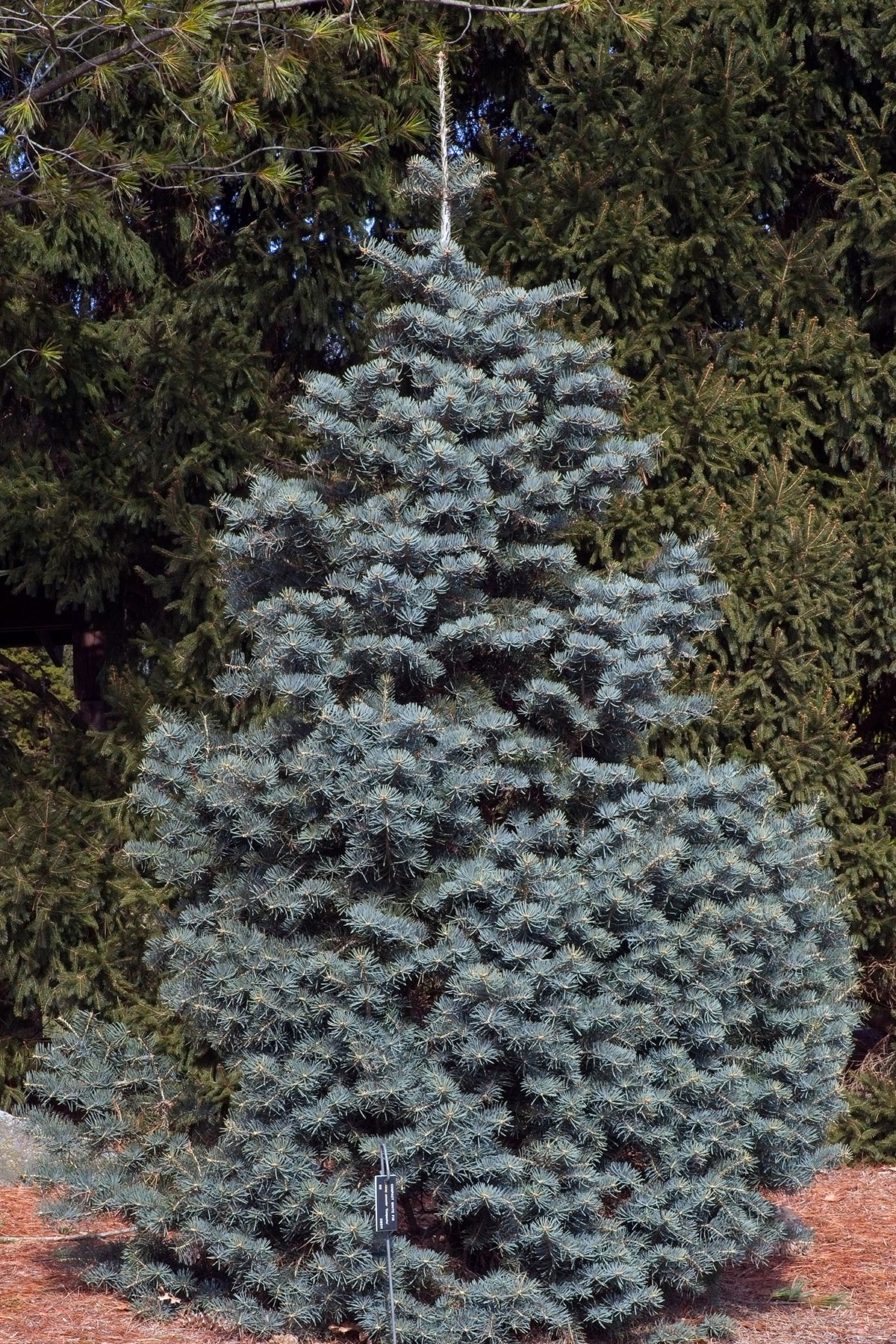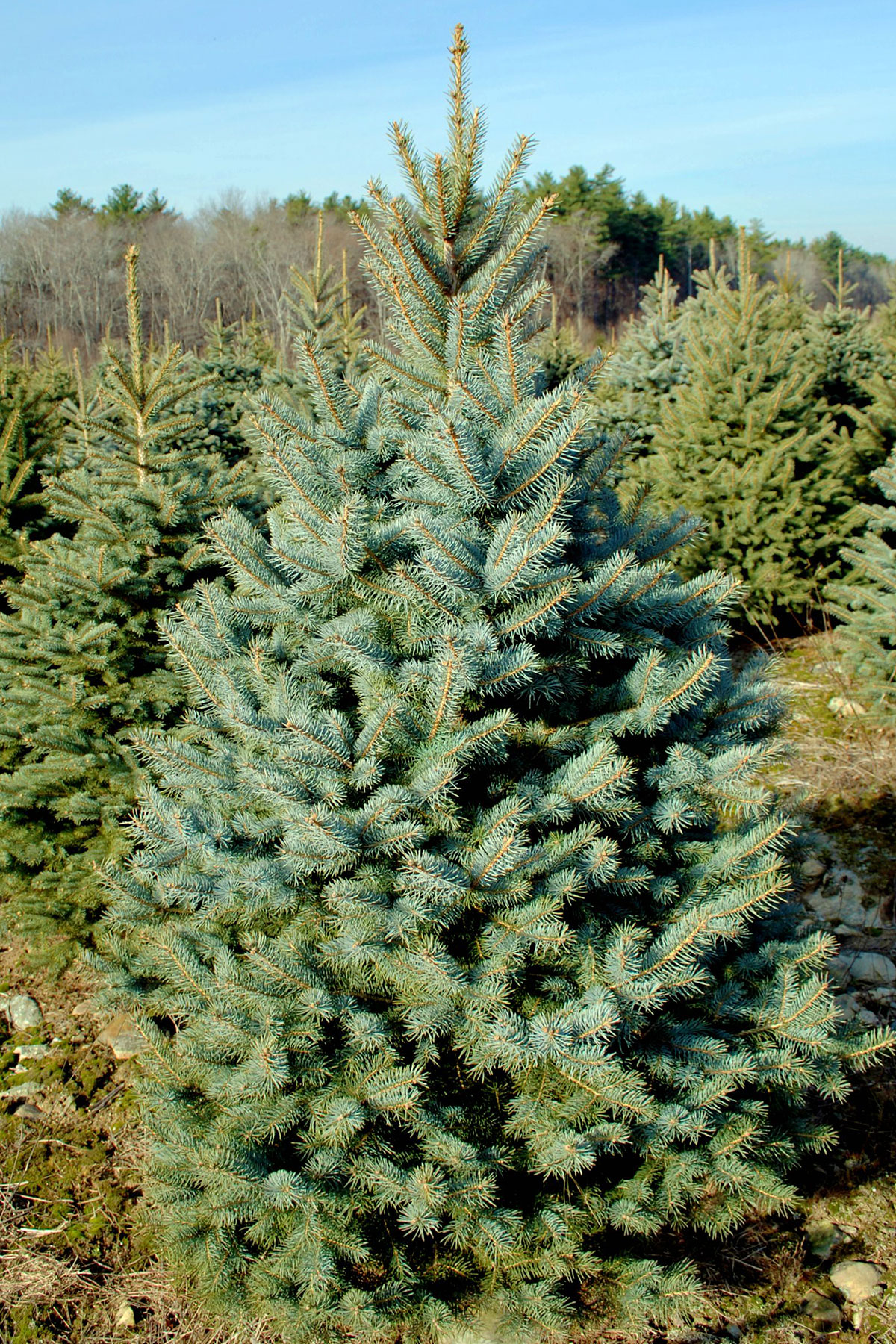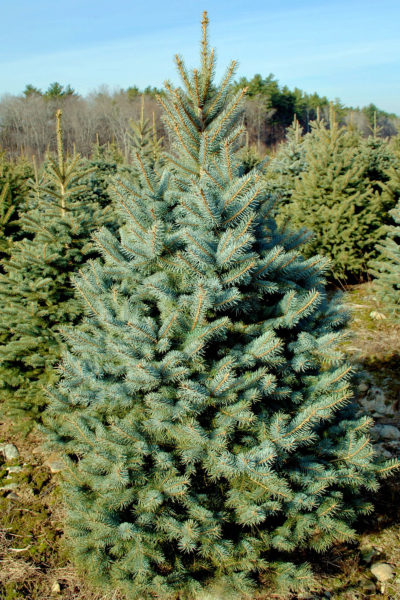Christmas tree permits are now on sale at National Forest and Bureau of Land Management offices and selected retail outlets in Southwest Colo. Permits come with a brochure explaining regulations and helpful tips.
National Forest/BLM offices sell maps and offer free advice on the best areas for tree harvesting, and the best species of tree to cut. Stop by one of our offices in Durango, Bayfield, Pagosa Springs or Dolores, Colo. Our friendly and knowledgeable Visitor Information Specialists can show you samples of the branches of different tree species to help you select the species of tree best for your holidays. They also have maps to point out the best places for you to get your special tree.
Buy a Christmas Tree Permit
A permit costs eight dollars to harvest one tree up to 20 feet tall for personal use. Permits expire on Dec. 31 for the year they were purchased (the color of the tags changes each year). Forest Service/BLM Permits are good only for the year in which they are purchased and are not valid for state, tribal, or private land. You can purchase up to five permits for personal use harvest (not for resale). Harvest must take place on the type of public land you designate on the permit (either BLM or National Forest).
Permits are on sale this year at:
- BAYFIELD: Columbine Ranger District, 367 Pearl St.
- CORTEZ: City Market, 508 E. Main
- DOLORES: Dolores Public Lands Office, 29211 Highway 184 and
- Dolores Food Market – 400 Railroad Ave, Dolores
- DURANGO: San Juan Public Lands Center, 15 Burnett Court and
- Kroeger’s Ace Hardware, Town Plaza
- MANCOS: Cox Conoco, 201 E. Railroad Ave.
- PAGOSA SPRINGS: Pagosa Ranger District, 180 Pagosa St.
Select the Tree Best for You
You can actually help public land agencies manage for forest health by selecting the right species of tree for your harvest. The below species regenerate easily in the San Juan Forest and are wonderful as Christmas trees. Please harvest these species:
- CUT: White Fir (“friendly” to the touch) White firs make for superb Christmas trees ~ they are fragrant, with soft needles and a shape made for the holidays, with a full crown and branches that are flat and strong to hold ornaments. Look for white firs at middle elevations. They have flat, flexible needles which attach separately to branches. Cones grow upwards but are usually gone by winter. Foresters highly recommend this species for use as holiday trees.
- CUT: Subalpine Fir (“friendly” to the touch) Very similar to white fir, but found at higher elevations ~ in the subalpine zone, hence the name.
- CUT: Spruce (Prickly to the touch) This species is found at higher elevations. Spruce needles are stiff, square and sharp, and needles attach separately to branches. Cones hang down with thin, papery scales.
Select the Tree Best for the Forest
There are other species of tree which do not regenerate as easily as those above and need protection from harvest. You are not allowed to harvest the below species, because they only regenerate when certain conditions all line up at the right time, including a good cone crop, moisture, sunlight and good soil. For these reasons, southwestern Colorado has an inadequate number of young trees in these species. The species below play a very important role in providing wildlife habitat and will be our forests of the future.
- DO NOT CUT: Ponderosa Pine Ponderosa pines grow at lower and middle elevations. They have long, round needles in clusters of two to three. Their classic woody cones have thick scales. Please help ponderosa pine forests regenerate ~ do not cut young pines as Christmas trees.
- DO NOT CUT: Douglas Fir Douglas firs grow at all elevations, most often on moist, north-facing slopes or in deep canyons. They have short, flat, soft needles that attach separately to branches with red-pointed buds. Douglas firs are easily identified by their smallish cones with little “tails” hanging out. Cones hang downwards from branches or can be spotted at the base of the tree.
- Consider NOT Cutting Pinyon Pine This the lowest elevation pine tree in southwestern Colorado. Insect epidemics have ravaged these trees in the past few years. Please harvest only in areas where young pinyon trees are abundant. Pinyons grow with juniper trees and have two to three needles in each cluster. Cones are small, and the tree is usually short and branchy.
Select the Right Size of Tree
Your Christmas tree permit allows you to cut a tree up to 20 feet tall. Please take the time to find just the perfect tree for your needs by choosing a tree as close to the size you want as possible. Never disfigure trees in the forest by cutting off just the top of a standing tree, or by cutting down a tree and then take only its top.
Cut It Correctly
Please try to leave no more than a six-inch stump. You can do this by taking a shovel with you so you can dig down through the snow to ground level and cut the trunk off as close to the ground as possible. Do not leave live branches on the remaining stump. This leaves the forest looking as natural as possible.
Tag Your Tree
Attach your permit to the trunk or branches before you move your tree. Make sure the tag is as visible as possible when you load the tree on or in your vehicle. You want the tag to be visible for forest officers to see. You can be fined for removing an untagged tree from federal lands without a permit.
General Rules – You Cannot Cut Trees:
- within 100 feet of county roads, or state or federal highways;
- within 100 feet of developed campgrounds;
- in areas designated as Wilderness and Wilderness Study Areas, Special Recreation Areas, or Research Natural Areas;
- in tree plantations (where trees have been planted) or where active timber sales are underway.
Specific Areas Where You Cannot Cut Trees:
NEAR DURANGO:
- La Plata Canyon
NEAR PAGOSA SPRINGS:
- Chimney Rock National Monument
- Williams Creek Research Natural Area
- Piedra Management Area
NEAR CORTEZ-DOLORES:
- Sage Hen Wildlife Area, McPhee and Lone Dome Recreation Areas from McPhee Dam to Bradfield Bridge, and Narraguinnep Research Natural Area
- Within 1/4 mile of West Mancos Road (FS#561) between the Forest boundary and Transfer Campground.
Be prepared for winter – be safe out there!
- Remember – there’s often more snow and colder temperatures in the mountains than in town. Start early – winter days are short. Take advantage of the limited sunlight. Check the weather forecast before you head out.
- National Forest and BLM roads are NOT plowed for snow removal. Be prepared with 4WD, snow tires and/or chains. Even if backcountry roads are not blocked by snow, dangerous ice conditions may exist.
- Many forest roads are closed and gated once the snow gets deep. Be prepared to snowshoe or ski if you want to access backcountry locations past gates. Also don’t expect a parking area to be snowplowed.
- For road conditions, call the San Juan Public Lands Center at 970-247-4874 or visit the San Juan National Forest at: www.fs.usda.gov/sanjuan.
- Realize that if you do drive up a narrow snow-packed road, there may be no turnaround area farther up, and you may have to slowly back down a narrow, twisting road to get out.
- Keep vehicles on open roads – do NOT drive on closed roads. Not only can you damage the area, you run a high risk of getting stuck.
- Carry a National Forest or BLM map of the area you plan to visit – sold at our offices and many outdoor retailers.
- Carry emergency supplies in your vehicle. For tips, go to: www.colorado.aaa.com/automotive/car_care_kits.asp
- Be prepared to hike through deep snow in cold temperatures. Wear warm clothes, gloves, a warm cap, and snow boots. Don’t go hungry or thirsty – hydrate well.
- Leave word with friends or family of your planned destination and time of return, and try not to go out alone.
- Avoid areas prone to avalanches.
SOUTHERN UTE TRIBAL MEMBERS
Cutting Your Own Christmas Tree
A free-use permit cutting permit may obtained from the Forestry office (by appointment due to COVID-19) for all interested Southern Ute Tribal members that wish to harvest a Christmas tree from the reservation.
The tree species suitable for Christmas trees on the reservation include ponderosa pine, Douglas-fir, white fir, and pinon pine. Ponderosa pine, Douglas-fir, white fir, and pinon pine may be found on the east side of the reservation. There is also an abundance of pinon pine on the west side of the reservation.
All of the cutting regulations are attached to the permit issued by the Forestry Division and interested Tribal members may contact Forestry’s Executive assistant at 970-563-4780 to make an appointment.
Our approved office hours due to the COVID-19 pandemic are Wednesday, Thursday, and Friday from 8 a.m. – 12 p.m.





